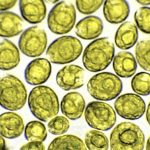#6: We’re Moving Upstream, Protecting your Limestone Beds
Hi All, We’ve been getting demos and upfront orders for MRUs to be used to protect limestone beds for some of our clients. (Bentley Development Co. Inc. and MB Energy in Blairsville and Sherpa Mining south of Johnstown).
North Cambria’s manganese bed (#3-4 sized, or the size of your fist) will benefit from iron (ferric) and aluminum pre-oxidation and filtration. At Bentley’s site, we are protecting a pH neutral iron (ferric) alkalinity bed of #2 whose influent is generating Schwertmannite though the flow is coming from an anoxic lime drain (use the crunchy iron between finger roll test at pH <5.5). Probably not all that anoxic come to think of it.
Big issue is the iron in all three cases (ferrous and ferric) and biogenic sediment that gets into critical alkaline generating treatment cells.
Getting all of that extra material in your limestone bed shortens long term retention, increasing clean-out frequency. In the case of the Bentley site with ferrous iron at pH 5.5 coming from the anoxic limestone drain, the iron load isn’t finished oxidizing and generating acid. Normally that’s an issue directly treated with limestone, caustic, or slaked lime, but misses the opportunity to remove iron as Schwertmannite, pH be damned.
Last year (2016) we ran 60 gallons a minute and pulled 4kg a day with two MRUs at the Altoona Water Authorities’ Squatter Falls (best rate) on Glen White Run. Alkalinity was <20mg/L, pH 5.5 dropping to 4.3 (average). The iron material was identified by xray diffraction as Schwertmannite at all three descending sample points in the MRUs (In, MRU1 Out, MRU2 Out).
Bentley has Scwertmannite at the end of the mentioned anoxic lime drain. Why not make more Scwertmannite? An MRU running at max O2 efficiency pulls between 500-800 grams of Scwert per cubic meter every day, all day. No Alkalinity. The microbes are the engine of the reactor.
When the ferrous iron energy source for the microbes excreting the Schwert runs low THEN you run the water to an alkalinity bed. The alkalinity bed can be smaller now that it is dealing with a fraction of the load of iron. Don’t forget that big load of acidity produced through the ferrous iron’s oxidation, its not gone. The limestone will buffer the load of acid it’s designed to buffer (moles to moles), but won’t be near as armored.
No big deal there, flush then add more limestone to make up for what is dissolved.
The now resulting ferric iron can be removed in subsequent MRU’s (best rate?) till iron is <0.35mg/L at pH <7, then drop your manganese. Smaller limestone can be used in the bed, increasing surface area and reactivity. Smaller systems also mean smaller and more effective flushing manifolds.
I’ll stop there, you get the idea. Pre-screen your limestone beds with MRUs to make them last longer and work better. The MRUs will pay for themselves. ‘Nuff said.
Peace,
Colin





